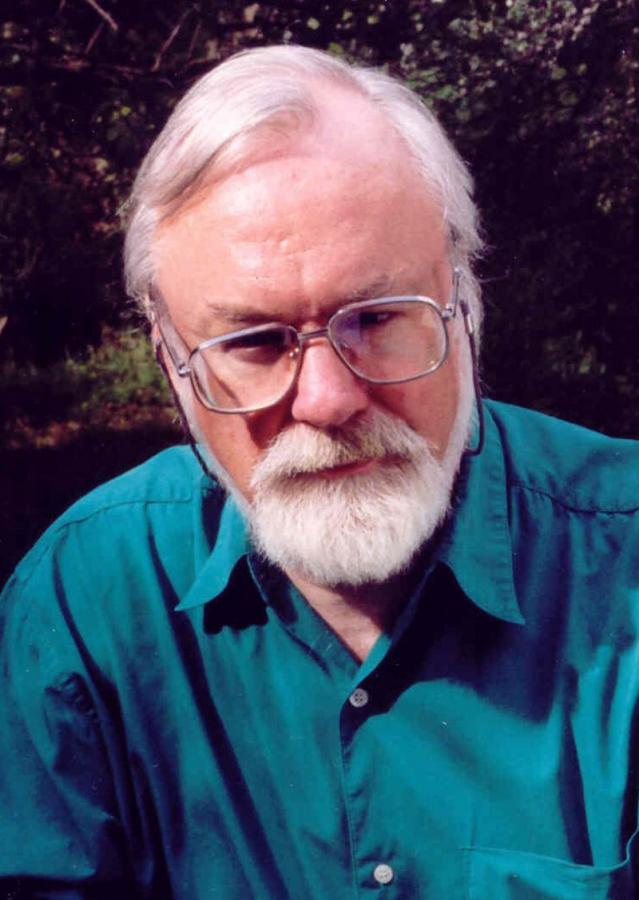A review appeared in Tempo Magazine from January 2013 of the Orchestra of the Swan’s “Trumpet Shall Sound” concert. A short excerpt follows
Although John McCabe’s Rainforest II, of 1987, is in effect a chamber concerto for trumpet and 11 strings, his extensive body of concertante works has lacked an official trumpet concerto. La Primavera, which had its première on 15 June 2012, now happily fills that gap. The subtitle derives from McCabe’s consideration of two aspects of the approach of Spring: the vitality of burgeoning growth and the flowering of the new or refreshed life as it expands.
Completed in 2012, McCabe’s concerto is conceived on a small scale, requiring an accompanying orchestra consisting of one each of flute, oboe, clarinet, bassoon, horn, trumpet and tenor trombone, together with a modest array of percussion – for one player – and strings. Two unconventional aspects of the score must be mentioned. First, in the work’s central Andante the soloist uses a flugelhorn, an instrument of melancholy radiance with resonances of Miles Davies and Vaughan Williams’s symphonic swansong; McCabe exploits both of these elements persuasively to stirring effect in his slow movement. The second unusual element concerns the percussion, which, due to its obbligato-like character, is required to be placed at the front of the platform near the trumpet soloist.
Formally, the work is traditional, with three clearly defined sections or movements in the pattern of fast–slow–fast. Quicksilver and quixotic, the opening Allegro switches between moods of buoyant festivity and chamber-like delicacy. Droll references to the Rite of Spring add to the music’s zestful good humour, though it is typical of McCabe’s fastidiousness that these Stravinsky ‘quotations’ are not merely inserted randomly into the score but rather constitute a logical development of the ascending and descending woodwind figures heard in the concerto’s opening bars…
Following without a break, the slow movement begins in a state of near-suspension, an effect achieved by layers of sustained and muted strings, before an intricate theme rises eventually from the lower strings, ultimately forming a full string texture. The jazz-like nature of this central episode is emphasised by subtle use of double-bass pizzicato and openly lyrical writing for the soloist. After a brief ‘quasi cadenza’ for solo trumpet and bongos, the swift finale is infectiously rhythmic, mirroring the first movement’s accumulation through the contiguity of various overlapping strands…In the concerto’s closing moments, the combined orchestral forces punch out a forceful, heavily accented unison before the textures rapidly etiolate, leaving the trumpet solo with the last word.
Commissioned by the Orchestra of the Swan and dedicated to trumpet soloist Simon Desbruslais, La Primavera was expertly rendered by these musicians under the authoritative direction of Kenneth Woods. A special tribute must be paid to the key contribution of the orchestra’s percussionist, spotlighted by this exacting score almost as much as Desbruslais; their extensive interplay was a crucial element in the concerto’s winning composite of conviviality and intimacy.
Earlier in the first half of the concert at Stratford-upon-Avon’s Civic Hall, another new piece received its world première – Deborah Pritchard’s Skyspace for solo piccolo trumpet and string orchestra, inspired by the installations of artist James Turrell. Divided into seven vivid miniatures, this finely wrought piece extracted a strikingly rich and diverse range of colours from its circumscribed resources, thanks in part to an imaginative use of divided strings, notably in sumptuous chordal passages….
Also on the orchestra’s exceptionally enterprising programme, which included Michael Tippett’s Little Music for Strings and Divertimento on ‘Sellinger’s Round’, was a rare and welcome opportunity to hear Robert Saxton’s piece for solo trumpet and small orchestra Psalm – A Song of Ascents, written in 1992 and given its première by John Wallace and the London Sinfonietta the following year. This poetic work was influenced by diverse biblical references to the trumpet, ranging from ceremonial fanfares to the instrument’s seraphic associations. The diversity of character suggested by these allusions is reflected in Saxton’s textless psalm, which ranges widely in mood from the bell-tinted introspective beginning, launched by a unison E, to the joyously rhythmic third and final section via a song-like allegro moderato central episode. Generating waves of pulsating energy, the score increases gradually in tempo until a resounding climax is reached, followed by a radiant, sustained A major coda ending in a state of repose. It was gratifying to be given a chance to experience this challenging work in a reading of such heroic panache and fierce dedication: soloist, players and conductor valiantly negotiated the score’s fiendish polyrhythms and labyrinthine tempo associations, whilst building a convincing case for it to be regarded as one of Saxton’s finest utterances.
To sum up, this event was memorable for the quality of its performances and the boldness of its scheduling in equal measure. It is a pleasure to be able to report that the featured McCabe, Pritchard and Saxton works have been recorded by the same artists for future release on the Signum Classics label.
Paul Conway

Recent Comments